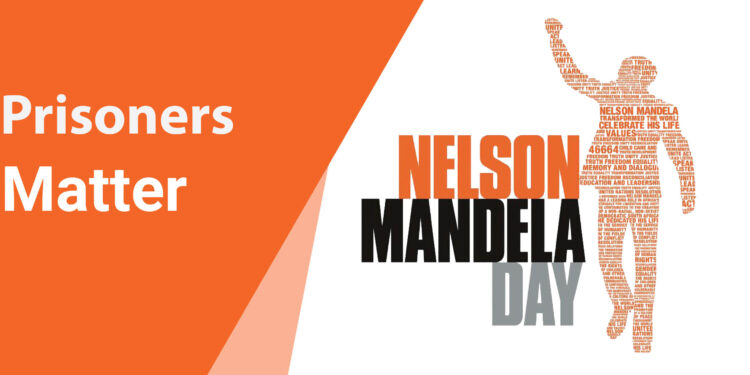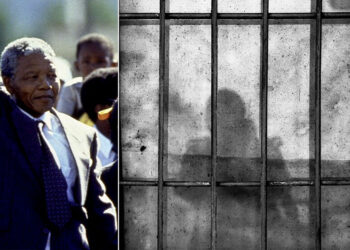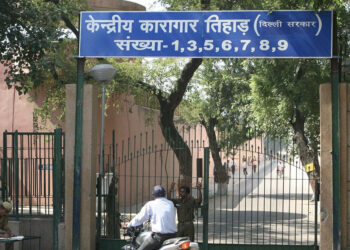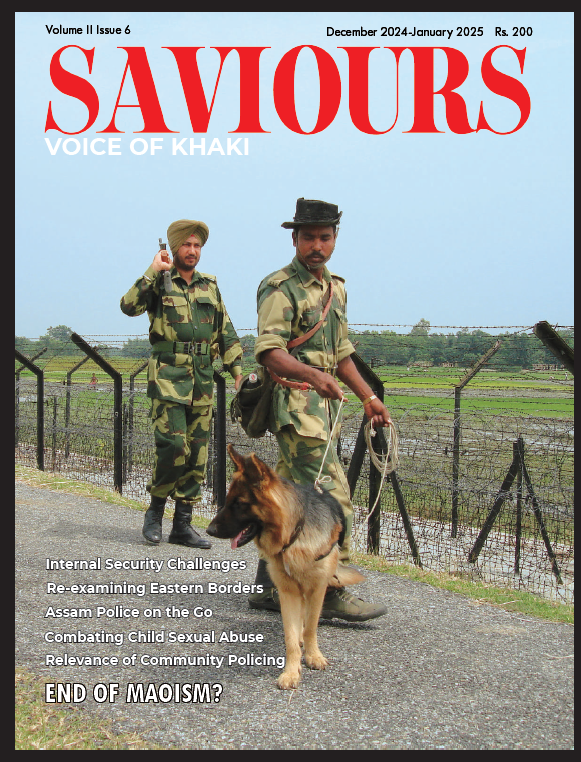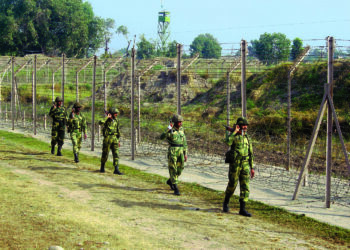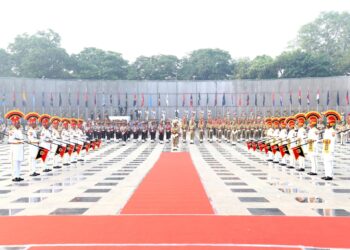The international Nelson Mandela Day is celebrated on July 18. It is a day to honour the legacy of the former President of South Africa, who endured 27 years of incarceration and inhuman treatment while advocating for peace and freedom. This occasion reminds all policymakers, civil society, and stakeholders in the criminal justice system of the crucial need to promote humane conditions in prisons, recognise the importance of prisoner reintegration in society, and value the significant role of correctional staff in providing a vital social service behind the high stone walls.
2025 holds special significance as it marks the 10th anniversary of the UN Standard Minimum Rules for the Treatment of Prisoners, also known as the Nelson Mandela Rules, and the 15th anniversary of the United Nations Rules for the Treatment of Women Prisoners and Non-Custodial Measures for Women Offenders – commonly referred to as the Bangkok Rules. These milestones underscore the significant progress made in prison management and the ongoing need to uphold these rules, which ensure the SAFETY, DIGNITY, and HUMAN RIGHTS of the inmates. This progress should instil a sense of optimism in all of us, as we continue to strive for better prison conditions.
There are more than 11.5 million people behind bars across the world. India alone has more than half a million prisoners in nearly 1330 prisons, as per the NCRB data of 2022. The number of prisons, whether central, district, or sub-jails, is grossly inadequate to provide dignified living conditions.

Many of the inmates belong to the most marginalised segments of society. Many prisoners in India live in overcrowded prisons where prison conditions may not provide the best of basic human needs. Most of the inmates are undertrial prisoners awaiting the outcome of their trial.
Unfortunately, these individuals are often forgotten by their family, society and the system. They suffer from loneliness, isolation, social stigma, anger, frustration, insomnia, depression and several other psychosomatic illnesses. But these people do matter. They come from our society, and their incarceration affects our safety, public health, state resources and the social fabric at large. As the National Human Rights Commission of India has asserted, the prisoners are first and foremost “human beings”.
While assessing the condition of Indian prisons in 1835, Lord Macaulay described them as “shocking to humanity”. The focus of the British was on retribution, punishment, and torture. The prison conditions have significantly improved after Independence. However, it is ironic that a recent public interest litigation titled ‘Inhuman Conditions in Prisons’, in the Supreme Court, puts the spotlight back on the not-so-desirable conditions in the Indian prisons.
According to the NCRB data compiled up to 2022, there are approximately 5.73 lakh prisoners in around 1,330 prisons across the country, with an occupancy rate of 131 per cent, which places us in the near extreme overcrowding category. Efforts have been afoot to augment the prison’s capacity, which, however, falls short of the pace of increase in the number of inmates. The actual capacity of prisons increased from 4,25,609 in 2021 to 4,36,266 in 2022. This increase was negated by the rise of inmates from 5,54,034 in 2021 to 5,73,220 in 2022, recording a 3.5% jump during the period.
President Draupadi Murmu, a couple of years ago, questioned the need for more prisons in a progressive society. However, the reality on the ground is vastly at variance with such a utopia. There is an urgent need to increase and improve accommodation for the existing prison population and future projections. This need is not just a matter of policy, but a pressing issue that demands immediate attention.
The bane of our criminal justice system is delayed trials, locking up huge numbers of undertrial prisoners (UTP) in prisons. Three in four prisoners are UTPs. Faster trials, as provided in the new criminal laws, and the creation of more lower courts may solve this riddle.
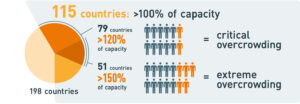
Most of these UTPs are involved in heinous crimes where bail is not available. However, there is a sizable number of other prisoners who have been granted bail by the courts but cannot meet the financial obligations of furnishing a bond and/or arranging a local surety. Following the mantra of ‘bail, not jail’, the Supreme Court, in the Sonadhar case in January 2023, directed local courts to modify or relax these conditions if bail bonds are not furnished within one month from the date of bail grant, which can lead to delays in the release of prisoners on bail.
Wherever a state has shown the will, a large number of such prisoners have been released. Maharashtra has released more than 9,000 inmates by synergising the District Legal Services Authority (DLSA), non-profit organisations and the prison staff. Other states are yet to emulate this robust and workable mechanism.
In another inspiring endeavour, the NALSA launched a nationwide campaign ‘Release-UTRC@75’ to commemorate 75 years of India’s Independence in 2022. This campaign, which involved the coordination of various stakeholders including the judiciary, legal services authorities, and prison staff, led to the release of nearly 25,000 prisoners, thereby decreasing the congestion by a substantial five per cent. Such release campaigns, if initiated by each high court at least once a year, could significantly reduce the burden on our prisons and improve the conditions for the remaining inmates.
In 2023, the central government started providing financial support to poor prisoners who were unable to afford the bail amount. The scheme provides financial aid of up to Rs 40,000 for undertrials and Rs 25,000 for convicts, based on the approval of the empowered committee chaired by district collectors. The Ministry of Home Affairs issued guidelines for the scheme.
The research wing of the Supreme Court identified approximately 25000 such prisoners. However, the scheme remains a non-starter due to the district magistrates’ unwillingness or unavailability to chair the meetings. The MHA, in its communication to the states in October 2024, has acknowledged that “many states/UTs are yet to take full advantage of this scheme despite the MHA’s repeated persuasion in this regard”. The onus is on the MHA to remove this bottleneck and entrust the job to DLSA, on whose recommendation orders from the concerned court should be obtained to release such prisoners.
Of late, emphasis has been laid on the rehabilitation and reintegration of prisoners rather than incarceration. Open jails have been discussed as a more viable and humane alternative to standard prisons. Himachal Pradesh, although a small state, has made pioneering efforts in establishing open jail facilities within the state. Instead of creating separate open jails, every prisons has created an open jail component where deserving inmates with a good track record and behaviour are provided livelihood opportunities not only in the prison factories but outside the confines of the prisons in partnership with industries, businesses and by innovative initiatives like the widely acclaimed Shimla Book Café and flagship Himkaara stores completely managed by life convicts. The department has also established a prison in Baddi, a central industrial and pharmaceutical hub, to explore the possibilities of skilling and providing jobs to deserving inmates in collaboration with local industry.
The Har Haath Ko Kaam project of Himachal Prisons aims at engaging maximum prisoners in meaningful livelihood-generating activities, ensuring financial independence and support to the families of the inmates, who are the secondary victims of the crime and get constantly punished and stigmatised for the crime committed by their breadwinner.
It is truly gratifying for Himachal Pradesh that the Apex Court in its interim orders dated 15/09/2017 observed that “the suggestion given by the learned amicus of encouraging the establishment of ‘open jails’ or ‘open prisons’ is certainly worth considering. It was brought to our notice that the experiment in Shimla (Himachal Pradesh) and the semi-open prison in Delhi are extremely successful and need to be carefully studied. Perhaps there might be equally successful experiments carried out in other States as well, and if so, they need to be documented, studied and emulated.”
Rajasthan has taken innovative strides by tying up with gaushalas in the state to rehabilitate convicts in maintaining these pounds. They live on campus with their families, leading a near-normal life and integrating with society.
Women, at 24,000, constitute under five per cent of the entire prison population. Most of the women inmates are confined to separate enclosures in general prisons. Even though most of the jails meant for women are not overcrowded, there are serious questions about the suitability of these facilities for the specific needs of women. The World Health Organisation has observed that “the prison system was primarily designed for men and many prisons do not have adequate facilities to protect women’s rights or to promote their health”. Their personal hygiene and medical needs differ from those of their male counterparts, requiring distinct approaches in prisons. Globally, there is a conscious effort to treat them as a particular category of inmates by recognising their special needs and creating an infrastructure tailored to them specifically.
As of 2022, 1537 women inmates were lodged with 176 children in the prisons. Separation of children from mothers is traumatic, to say the least. Issues of pregnant inmates, lactating mothers, young children, special diet, specialised medical care, etc., become important management issues in the prison administration if humane treatment is to be meted out to this category of prisoners.
Prisons have their own problems. Large vacancies, causing a one-third staff shortage, are detrimental to proper watch and ward, safety, and security duties. The vacancy position of the correctional staff that includes probation, welfare, and health officials, counsellors, health and psychologists/psychiatrists is much worse at over forty per cent, which adversely impacts health, including mental, welfare and a facilitating environment inside the correctional facilities.
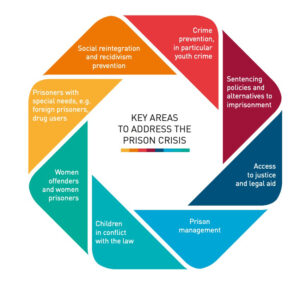
The role of the Government is paramount in improving the living conditions inside jails for women inmates. The State and central governments must support prison establishments to transform them into reformatories. Several committees have been constituted in the past since Independence, which have made recommendations to improve the condition of prisoners, particularly women in the Indian prisons. All India Jail Manual Committee, 1957, Working Group of Prisons, 1972, All India Prison Reforms Committee, 1980-83 (Mulla Committee), All India Group of Prison Administration, Security and Discipline, 1986, National Expert Committee on Women Prisoner, 1987 (Justice Krishna Ayer Committee), and Ministry of Women and Child Development Report on women in prisons, 2018 have made several recommendations for improving the living condition for prisoners. The Supreme Court has also directed state High Courts to monitor the condition of prisons in the states.
The judicial activism, the urgency of the prison departments across the country, the advocacy by nonprofits, and the government’s support create an environment of hope and optimism for the incarcerated.


